HOW TO
Fly the DJI Phantom 4 RTK drone in ArcGIS Flight
Summary
Flying drones with real-time kinematics (RTK) enhances the accuracy of imagery products. RTK drones, such as the Phantom 4 RTK (P4RTK), carry a GNSS receiver onboard to gather location data from base stations as well as satellites. There are two options to use RTK capabilities in Site Scan: connecting to the D RTK-2 mobile station, or connecting to a base station over a network. Below are the steps for how to connect to an RTK station and fly the Phantom 4 RTK in the Site Scan Flight for ArcGIS app.
Important notes about flying the Phantom 4 RTK in ArcGIS Flight:
- When connecting to a base station using NTRIP, the iPad must be connected to the internet for the duration of each flight to maintain RTK connection.
- Image Distortion Correction or “Dewarping” must be disabled to process correctly in ArcGIS Flight.
- In the Site Scan Manager advanced processing settings, Image Input Vertical Datum must be set to WGS 84 Ellipsoid to process 3D outputs correctly in ArcGIS Flight.
Procedure
- Connect the iPad to the P4RTK drone. If you are using the P4RTK for the first time, open the DJI GS Pro app to ensure RTK is enabled on the drone.
- Update the ArcGIS Flight app to the newest version and open the app on the iPad.
- Open an existing Project or create a new Project.
- Connect to the P4RTK drone and select Phantom 4 RTK in the drone selection drop-down. An RTK indicator appears on the telemetry bar once the RTK drone is connected.
- Tap the RTK indicator and open RTK Settings, as shown in the image below.
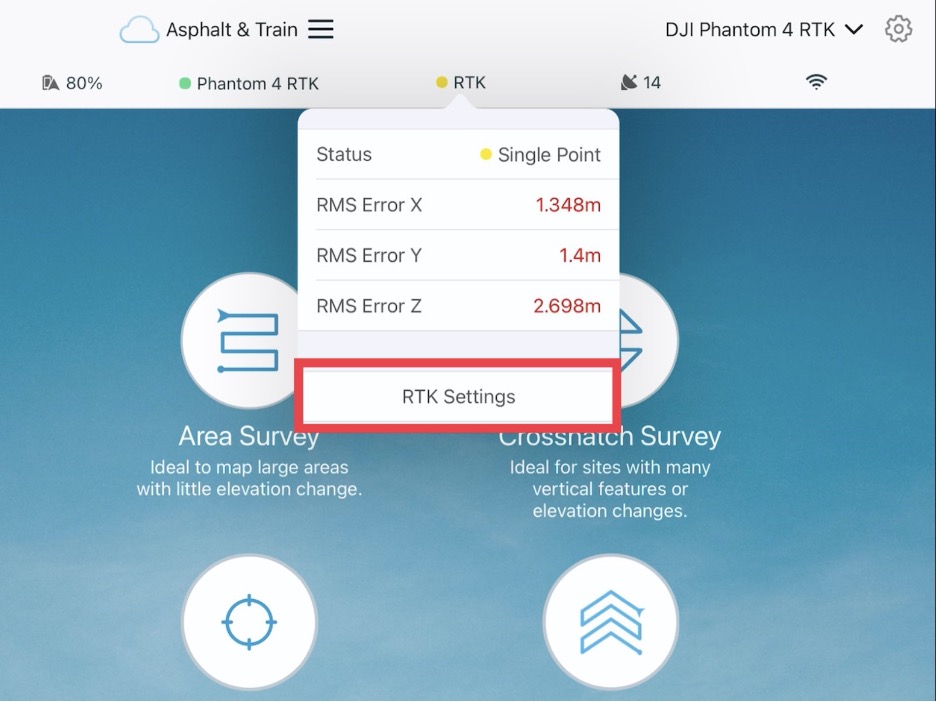
- Tap the Base Station field to open up a list of Available Base Stations, shown below.
- If using D-RTK 2 mobile station, select D-RTK 2 and skip to step 11.
- If using a network base station, any previously saved stations are seen in the list. To add a new station, tap Create New RTK Network Service Provider Source.
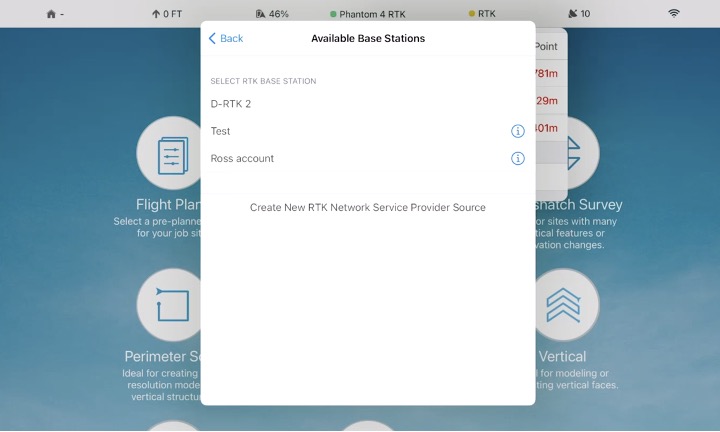
-
Enter the Network Service Provider information and tap Save.
- Provider Name: a nickname to remember this base station in the future.
- URL: sometimes referred to as the NTRIP ID
- Port: sometimes referred to as the NTRIP Port
- Mount Point: this is specific to the desired base station
- Username and Password: your NTRIP credentials
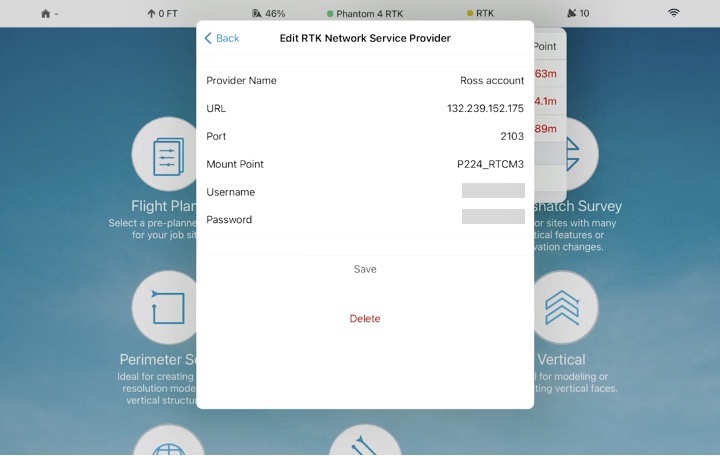
-
Select the new base station and in the RTK Base Station Settings pop-up, confirm it is listed in the Base Station field, as shown in the following image.
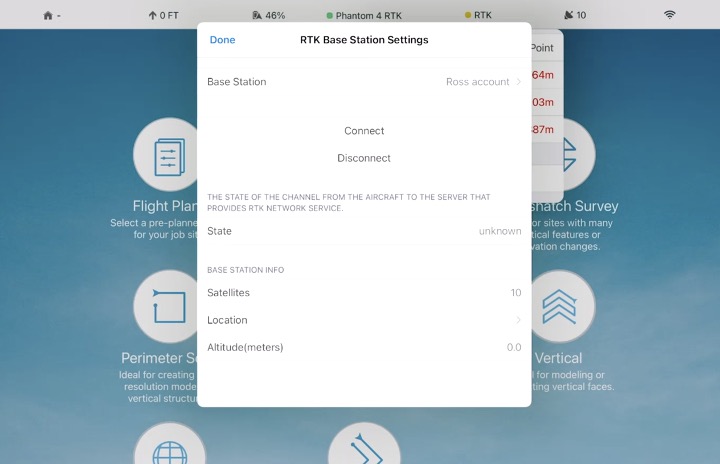
-
Tap Connect. After a few seconds, the State should change to transmitting. This indicates that the base station is successfully connected and is actively sending correction signals to the drone.
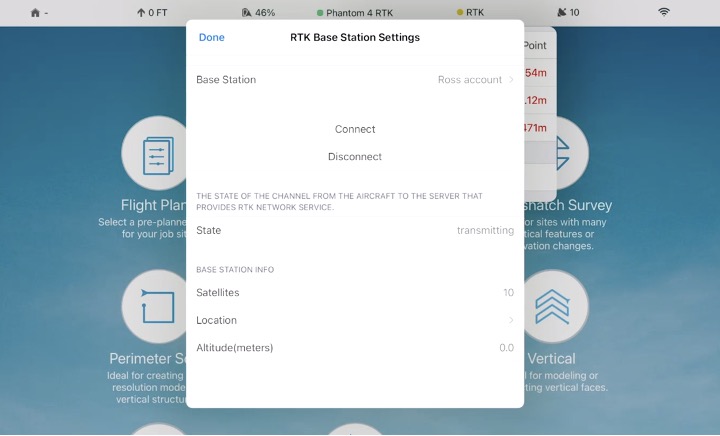
- If there is an authentication error, navigate back to the base station settings and confirm your credentials.
-
If desired, view additional base station information including the number of GPS and GLONASS (GNSS) satellites, location, and altitude.
-
Exit the RTK Base Station Settings menu and observe the RTK > Status drop-down. The status indicator should change to green (fixed point). It may show as yellow (single or floating point), in which case wait until it turns green so it can receive fixed point corrections from the station. If the connection is red, the drone is not receiving any positional correction and the base station configuration should be reviewed.
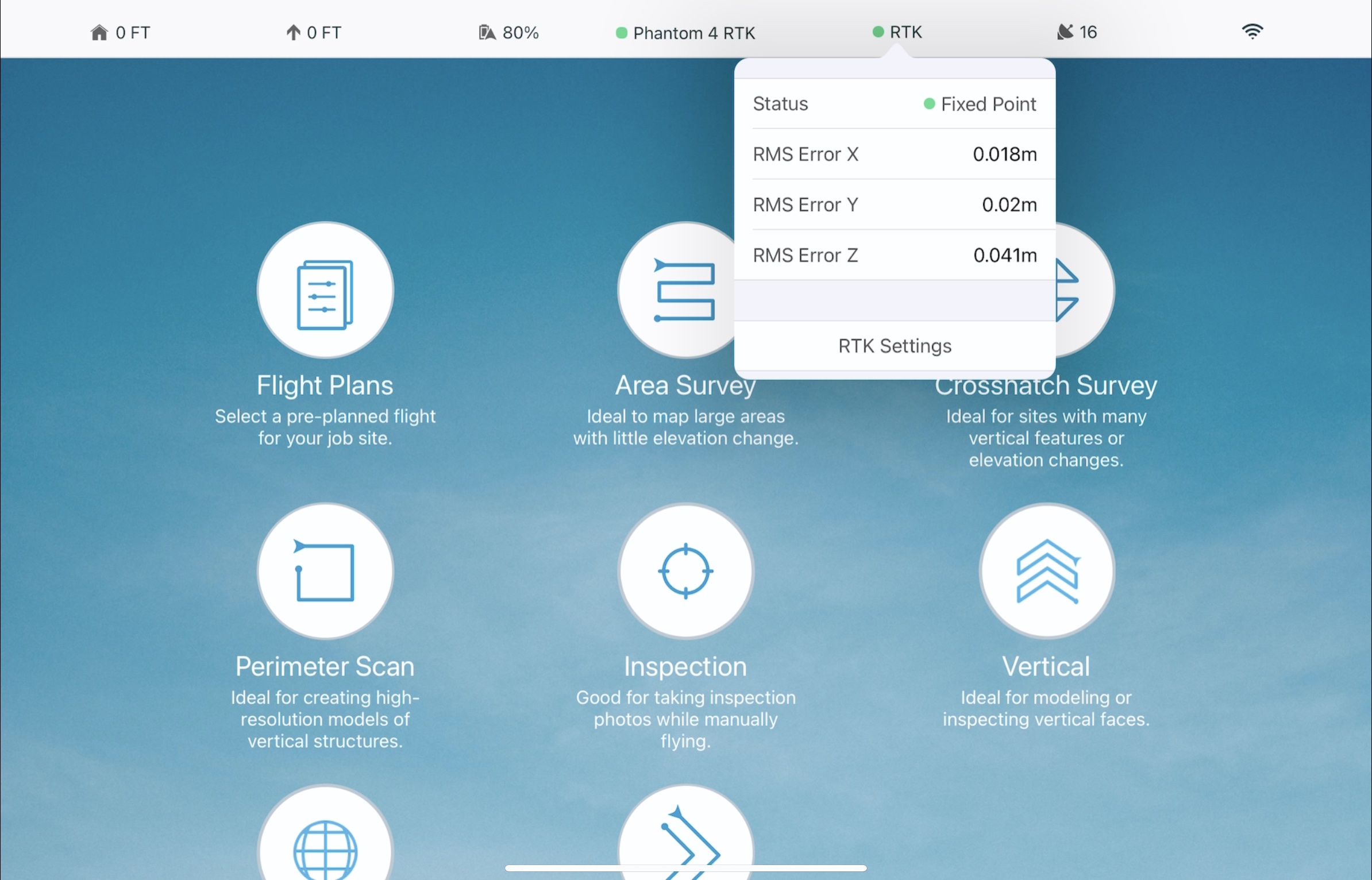
-
Plan a mission or open an existing flight plan.
-
If not already enabled, toggle on Enable RTK.
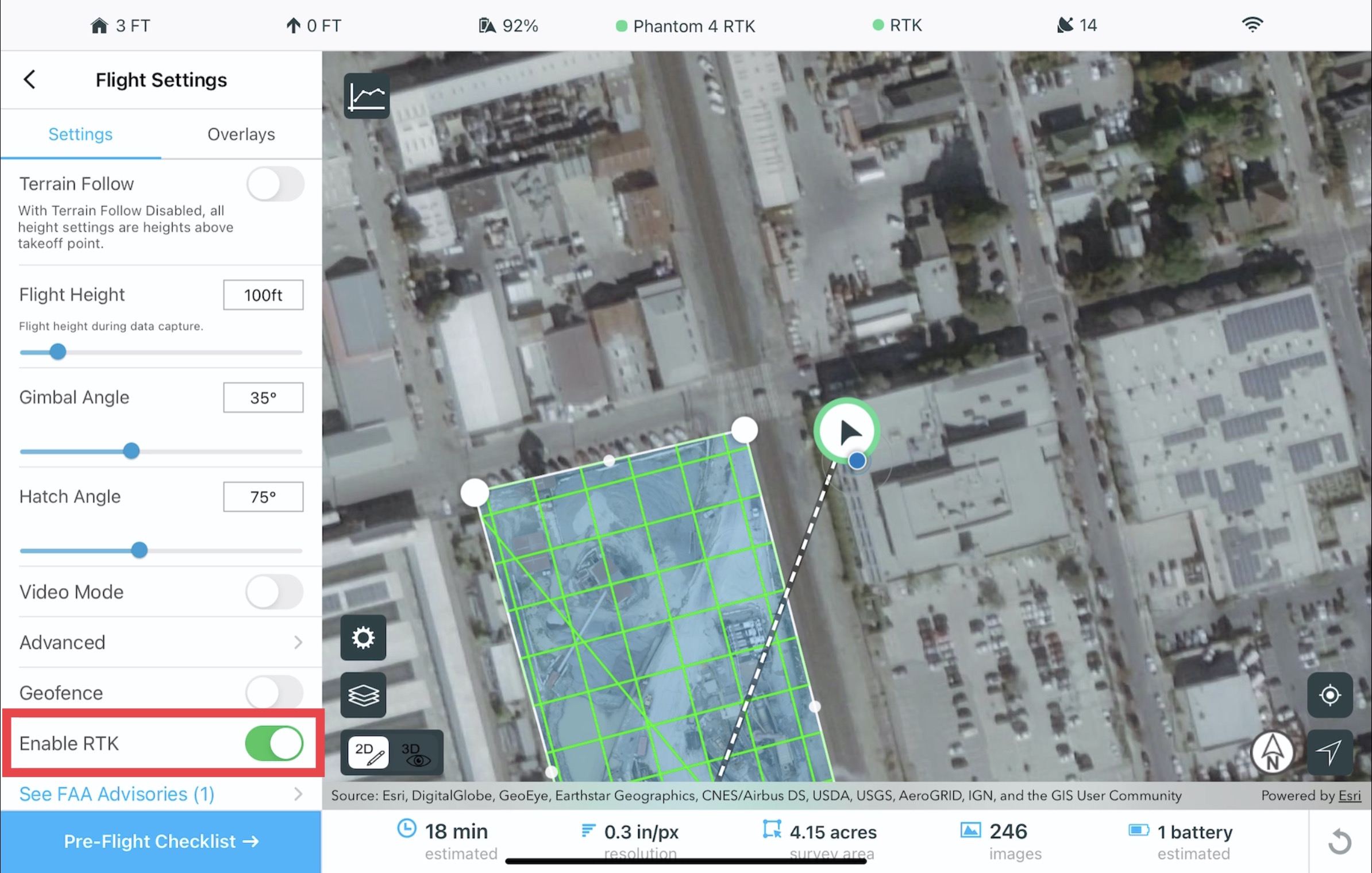
-
When you are satisfied with the flight plan, and when the desired connection status is established, execute the flight. At any point during the flight, you can return to the RTK menu to view more details about the X, Y, and Z RMS Errors, as shown in the following image.
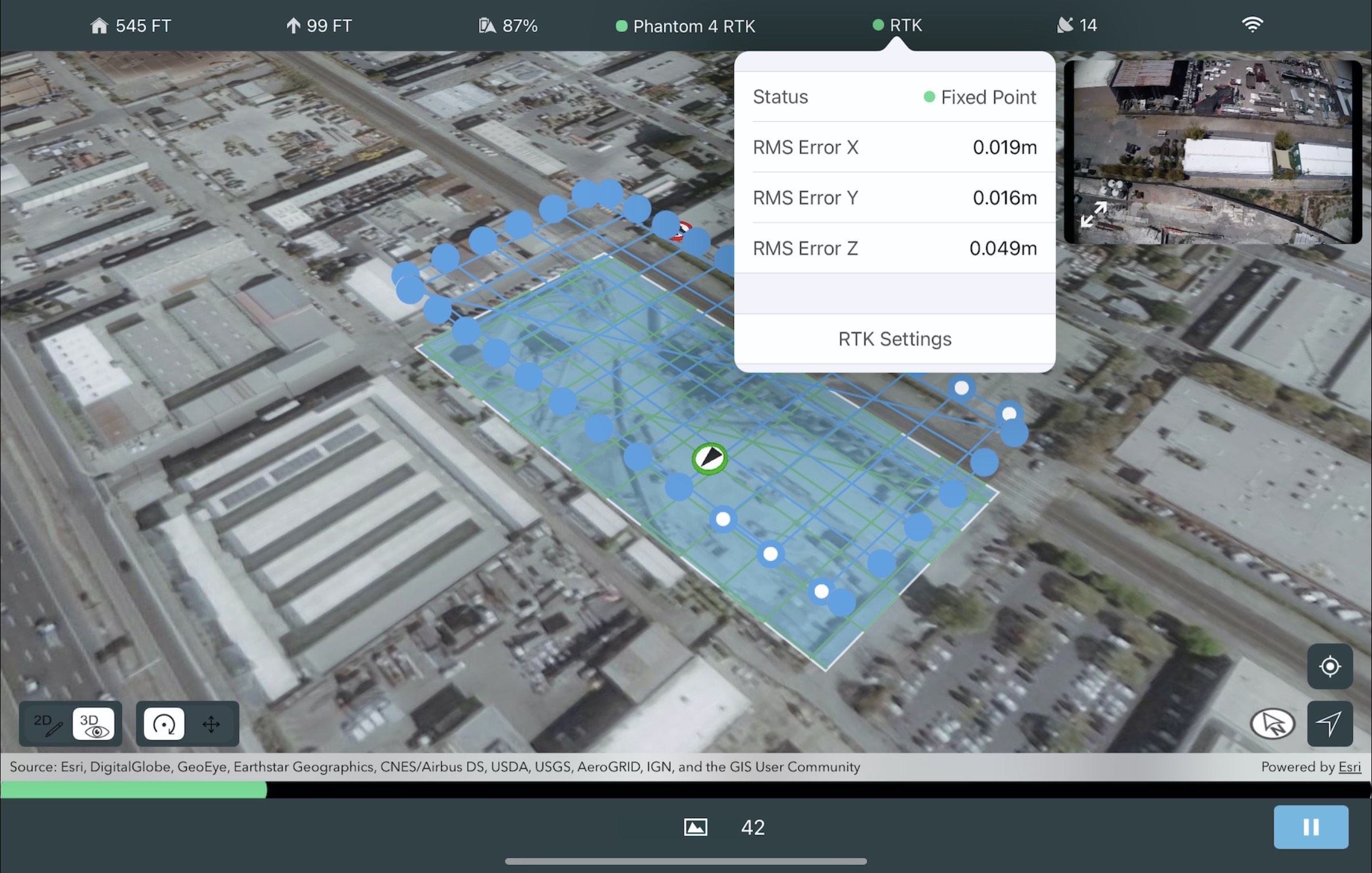
-
After completing the mission, retrieve your images using the preferred method (wireless download or SD Card dongle), and upload them to Site Scan Manager for ArcGIS for processing.
RTK Color Definitions
The RTK indicator on the telemetry bar changes color depending on the RTK status:
- Grey/crossed out: RTK is disabled

- Red: RTK Enabled with No Positioning
- Yellow: RTK Enabled with Single Point Positioning or RTK Float Solution

- Green: RTK Enabled with Fixed Solution (shown in procedure)
RMS Error values change color depending on the error margin.
- Black: 0 < RMS Error ≤ 0.1m
- Red: RMS Error > 0.1m OR RMS Error = 0
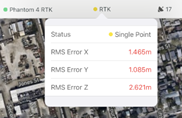
Article ID: 000024385
- Mobile Applications
Get help from ArcGIS experts
Start chatting now

